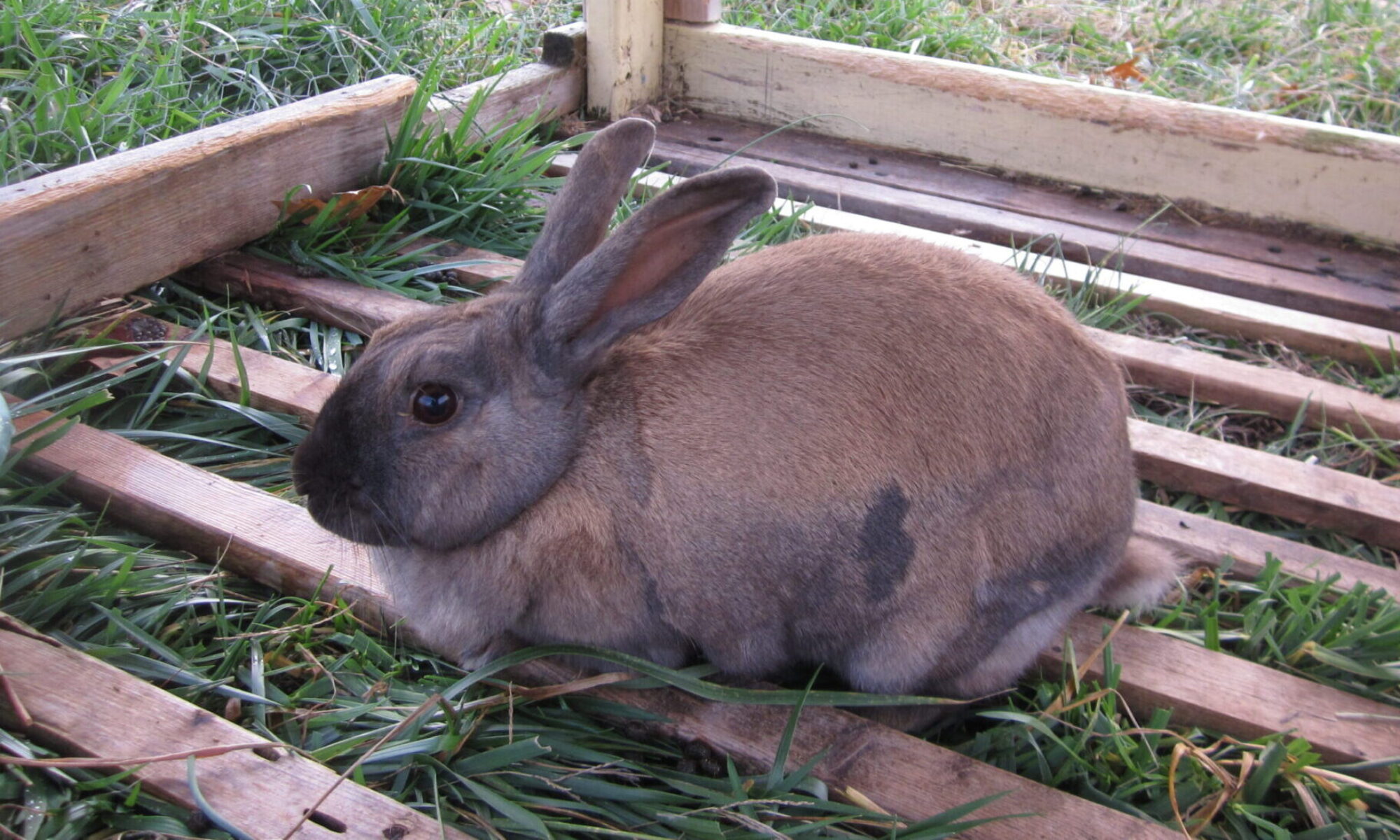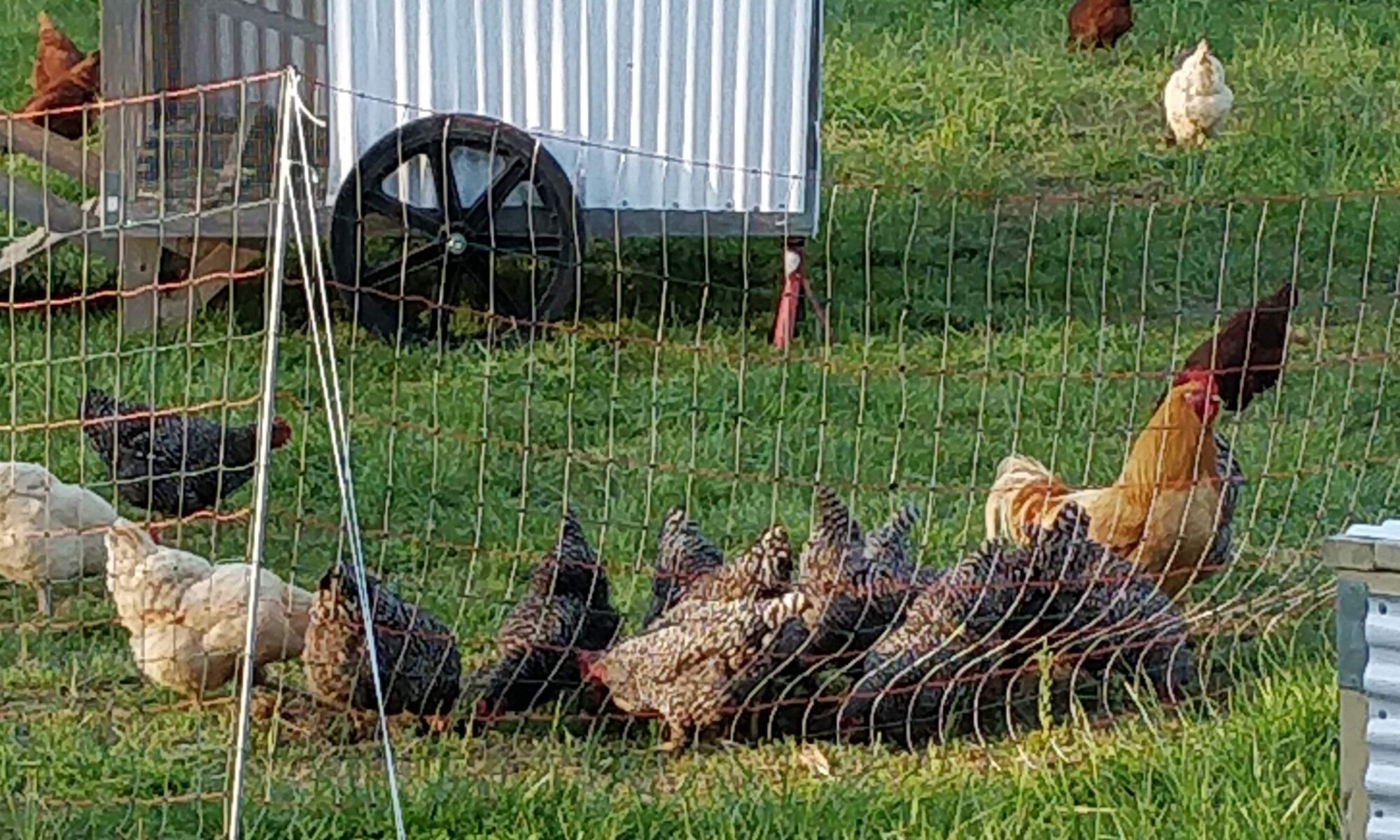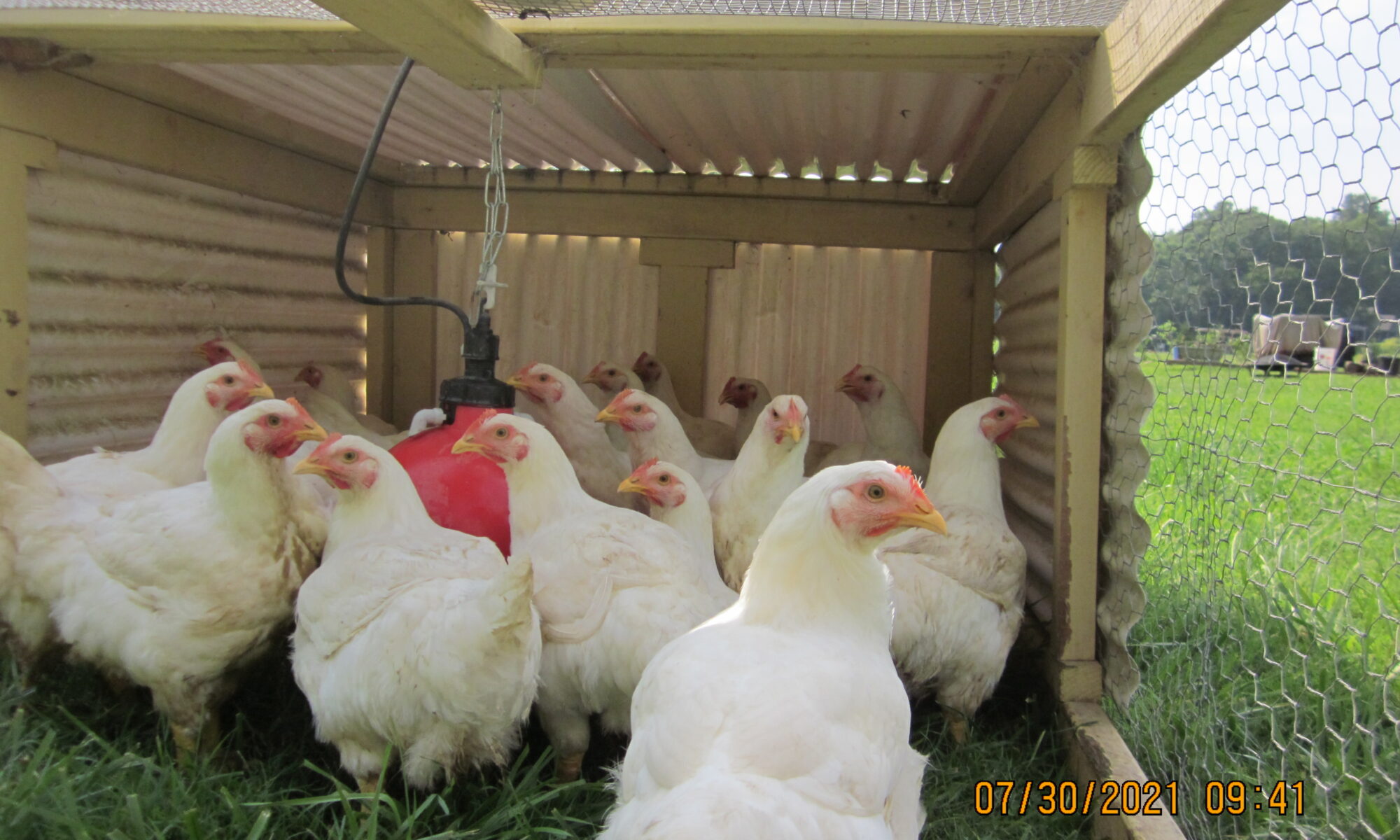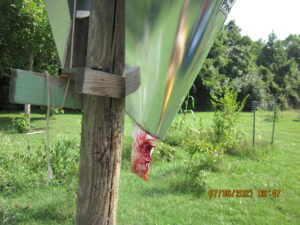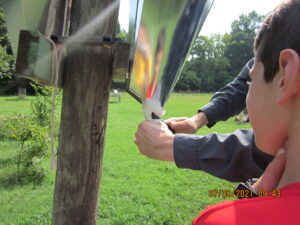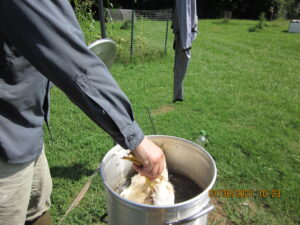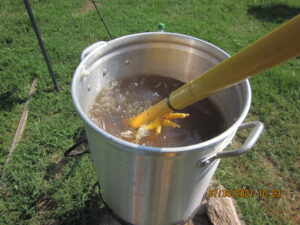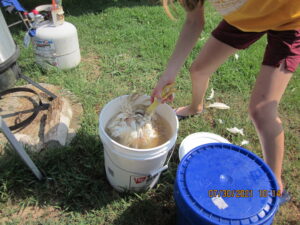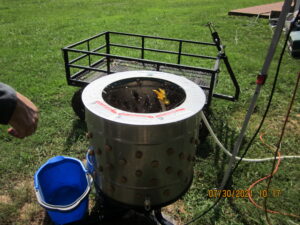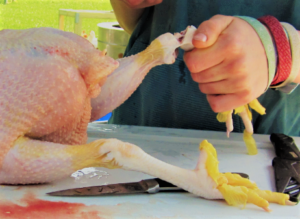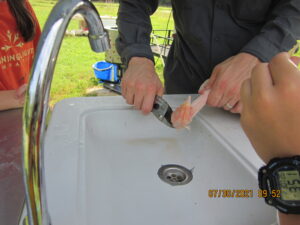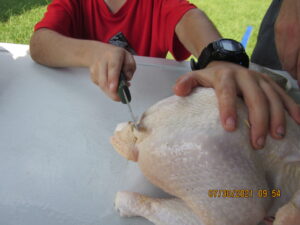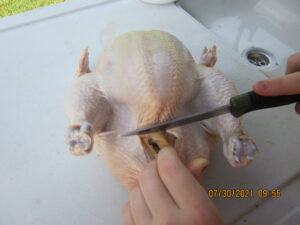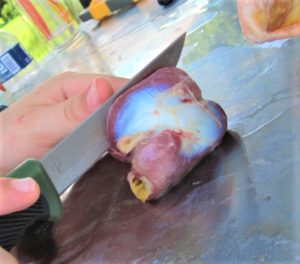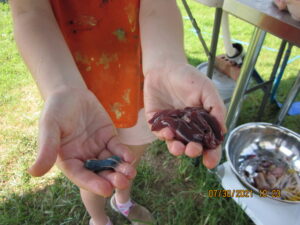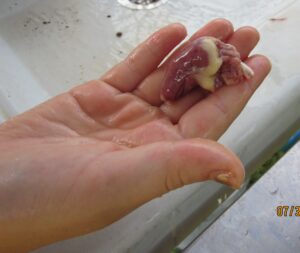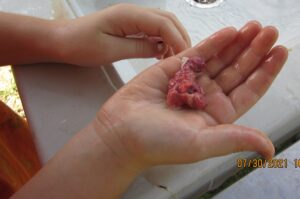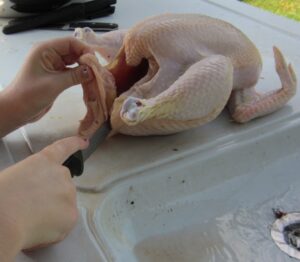Once the layer chickens are ready to graduate from the brooder box, what now?
If you read my previous post, you would have seen that I recommended you order the Premier 1 Supplies for netting around the chickens, but we haven’t discussed the actual housing yet.
Chickens need a place to roost and at night is when they drop most of the fertilizer onto the surface below. So the ideal house would provide:
-
- roosting poles (about 1ft width per chicken)
- a clear path to the ground for the droppings to fertilize below
- mobile so the fertilizer can be spread around
- shelter for the birds from the sun
- dark nesting boxes for hen privacy (1 box per 10 hens minimum)
- easy to move by hand
- good defenses against predators
We have used several different houses for our layer chickens, but the one I like the best is the ChickShaw from Justin Rhodes at Abundant Permaculture. He has free plans for two sizes of ChickShaw.
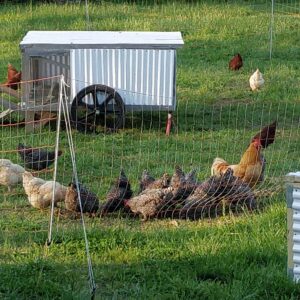
Plans are available here: https://abundantpermaculture.com/Mobile-chicken-coop/
Now before you get all excited about this excellent house and plans…you have to build it yourself. We had a good time building ours over Christmas break in 2019, but it took about two weeks. (Did y’all hear that…2 weeks!)
It is a big job, but at the same time we had some quality family time working on it.
I recommend downloading the plans and reading them entirely before cutting any wood or even buying any wood.
Some things to look out for in the ChickShaw 2.0 plans – Justin has you cutting 2x4x8’s the long way into 2x2x8s, which you need a table saw to do. So if you have a table saw, go for it, if not, buy 2x2x8 for some of the lumber. (Refer to above where I recommend reading the plans entirely first.)
Also, wow, this is not going to be a cheap chicken house. In 2019 this was north of $800 dollars in materials alone. I’d expect this is probably closer to the $1000 mark now if you choose to use Cedar wood. Treated lumber will be a bit cheaper.
Also Justin is working on the ChickShaw 3.0 plans, which from what I can tell the main difference is incorporating a towing option instead of a manual move process. Personally, I like moving it by hand, but loaded with 40 chickens it is pretty heavy.
Okay, so you’ve made the investment, you have all the materials, and you are building this thing…great!!! What do you do when the chickens are ready to graduate from the brooder box?
Evaluate if your chickens will be able to sneak through your Premier 1 poultry netting…and if not:
I would put them out in the ChickShaw (locked in it) for 24 hours or so, to instruct them where they live. (Only if it is going to be above 75 degrees and below 100 degrees.)
Next morning, open the door and let them out within the fencing. Throw some feed on the ground (if you are going to use feed versus grass/bugs/”free-range” only.) Have a good water supply for them and turn on the energizer until dusk.
I like to collect eggs in the late afternoon before dinner…depending on the age of your chickens that is…most chickens won’t start laying for 3-6 months.
When it is dusk, they should know where to go – back into the house to the roosting poles. If they roost up near the nesting boxes – shoo them off and close the nesting box frame. Finally close the main front door of the ChickShaw and they are put to bed. Come morning open the front door and open the nesting box frame.
